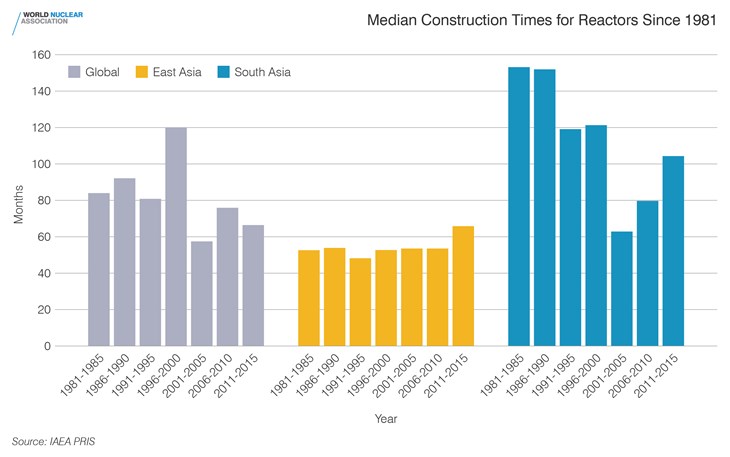Key findings include:
• Ten reactors came online in 2015, more than any time in the last 25 years. Nine are situated in East Asia, with eight in China and one in South Korea.
• The construction period for nuclear power plants in East Asia have been consistently low over the last thirty-five years, taking on average 55 months. This is part due to the benefits of on-going construction programs where lessons learned can be applied to subsequent projects.
• Nearly two-thirds of the reactors under construction globally are being built in seven countries in the Asia region. A further nine countries in Asia have firm plans to start new nuclear build in the near future.

Nuclear capacity factors in East Asia have been higher than the global average, while those of plants in South Asia have been lower, but have shown steady improvements over the last 35 years.
Speaking at the launch of the report, Director General of the World Nuclear Association Agneta Rising said, “This report highlights the high standards and performance of construction and operation of nuclear reactors in many Asian countries. As we look to expand nuclear generation worldwide there will be much to learn from their experience.”
Even though new build levels are at a 25 year high, the rate of new grid connections will have to increase significantly to support global economic growth, alleviate energy poverty and provide enough clean energy to meet agreed climate change targets. The nuclear industry’s Harmony goal is that there should be 1000 GWe of new nuclear build by 2050, with nuclear generation supplying 25% of global electricity demand.


